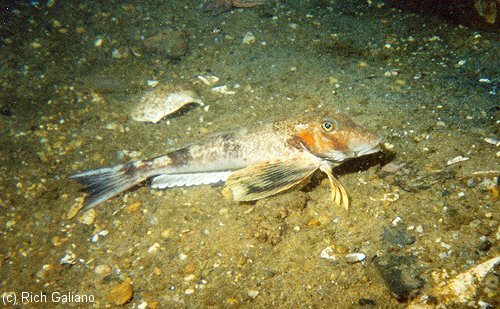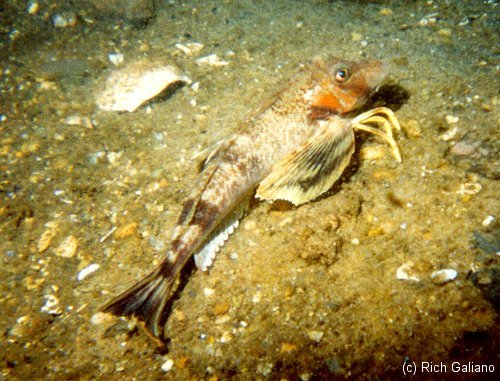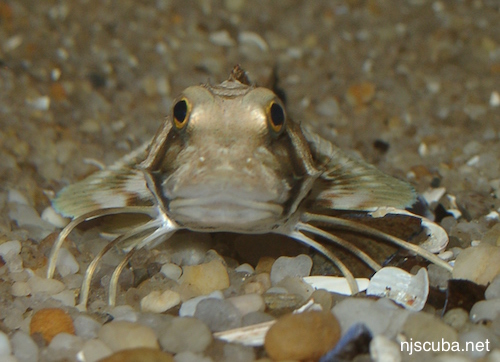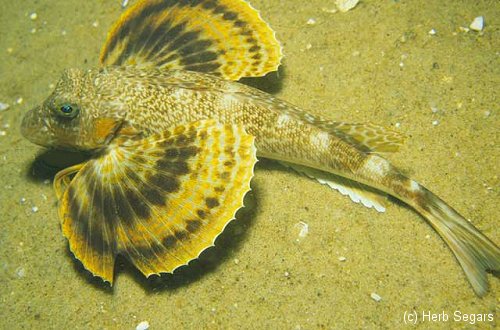Northern Sea Robin
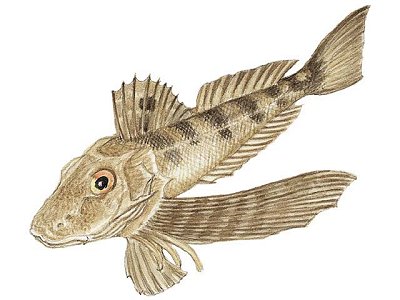
Prionotus carolinus
Size:
to 16"
Description:
Sea Robins are distinguished by the three free rays of the pectoral fins, with which the fish can actually walk across the bottom. They make frog-like croaking sounds when disturbed. Sea Robins have razor-sharp gill covers and spines, and are best left alone - there's not much meat on them anyway.
Sea Robins are generally found inshore in harbors and inlets, in 30-40 foot depths, but move out to deep waters in winter.
